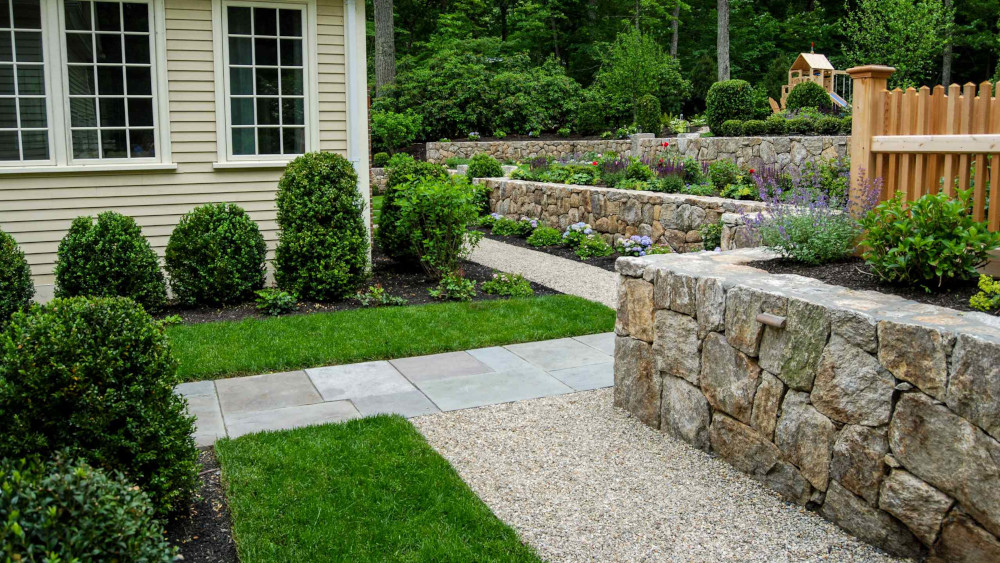Outdoor living spaces have become essential for New Zealand homeowners seeking to extend their homes into nature, maximize available land, and increase property value. While retaining walls are commonly associated with erosion control and structural support, they also play a significant role in defining, beautifying, and enhancing outdoor areas. From terracing sloped properties to framing patios and gardens, retaining walls can transform a backyard into a versatile and welcoming outdoor living space.
In this blog, we’ll explore the many ways retaining walls can be used to create outdoor living spaces, the materials and designs available, and essential maintenance tips for keeping them looking pristine. Let's delve into how retaining walls can help bring your outdoor vision to life in a sustainable and functional way!
Retaining walls offer several advantages that go beyond soil stabilization. They can:
When creating outdoor living spaces with retaining walls, the choice of materials, style, and height is essential. Each factor will affect both the function and aesthetics of your wall.

A flat area created with retaining walls is an ideal spot for an outdoor dining area. Install a timber or concrete retaining wall to define the space, then add a sturdy dining table, chairs, and weather-resistant décor. To elevate the space, consider adding lighting or a pergola for shade.
Retaining walls can help organize garden beds and create a series of planting areas at different levels. This layered effect is particularly appealing for New Zealand properties with native plants, flowers, or even small fruit trees, making the area feel lush and inviting.
For those who love outdoor cooking, a retaining wall can separate a BBQ area from the rest of the backyard, creating a defined space for grills, prep tables, and storage. Opt for durable materials like stone or concrete, which are more resistant to heat and weathering.
A low retaining wall can double as seating around a fire pit or outdoor lounge area. This approach saves space and creates a seamless look. Add cushions to make the seating comfortable, and consider using concrete or stone for a modern aesthetic.
On sloped properties, a series of terraced retaining walls can create garden "rooms," each serving a unique function such as a reading nook, a play area, or a small herb garden. Terraced walls not only maximize space but also add depth and visual interest.
Retaining walls can be used to frame walkways and steps, connecting different areas of your outdoor space. This is especially useful on sloped properties, where steps may be necessary for easy access. A combination of materials, like timber for the steps and stone for the walls, can create a visually appealing contrast.
Before starting your project, there are several factors specific to New Zealand landscapes and weather conditions to keep in mind.
Proper drainage is essential for retaining walls, especially in New Zealand, where heavy rainfall can affect soil stability. Ensure your retaining wall includes a drainage solution, like gravel backfill or weep holes, to prevent water from building up behind the wall.
Retaining walls over a certain height may require permits, depending on your local council’s regulations. Consulting with a professional landscaper will ensure that your project meets all compliance standards.
For properties near the coast, choose materials that are resistant to salt and humidity, like treated timber or marine-grade concrete. This will extend the lifespan of your wall and help it withstand coastal conditions.

To keep your retaining wall looking great and functioning well over time, follow these maintenance tips:
Designing and constructing retaining walls requires skill and an understanding of the land's unique challenges. Working with a professional landscaper ensures that your wall is built safely, meets all New Zealand regulations, and enhances the visual appeal of your outdoor space. Professionals can also provide guidance on material selection, drainage solutions, and maintenance tips tailored to your property.
Retaining walls offer more than just structural support for your property. When thoughtfully designed, they can transform outdoor spaces, create functional zones, and enhance the overall look of your landscape. Whether you’re looking to create a peaceful garden nook, an inviting dining area, or a stylish patio, retaining walls are versatile tools that bring both form and function to your outdoor living spaces.
At Retaining Walls by LandscapingHQ, we specialize in crafting retaining walls that enhance and protect your outdoor spaces. If you're ready to elevate your landscape with a functional and beautiful retaining wall, get in touch with us today to start your project. Let us help you bring your outdoor vision to life with expert solutions tailored to your needs!